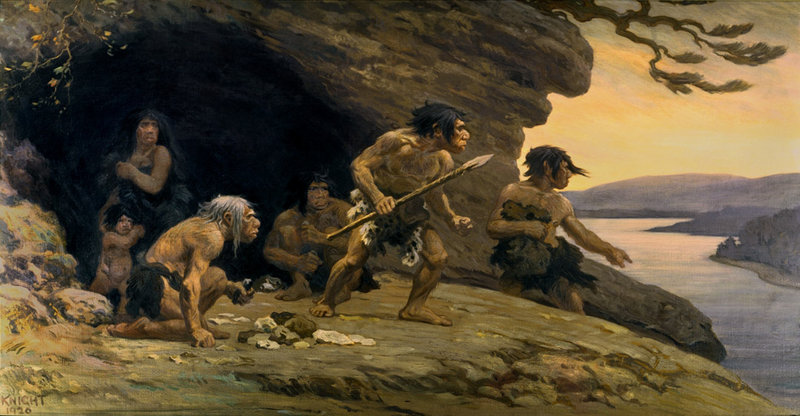LOS ANGELES – The Neanderthal never stood a chance. Modern humans who entered Europe may have outnumbered their hominid relatives 10 to 1, a new study has found.
The research, published online Thursday in the journal Science, helps explain why Neanderthals — who had lived in Europe for at least 200,000 years — died out about 40,000 years ago, soon after modern humans migrated from Africa.
Researchers had long surmised that human population growth may have overrun the Neanderthals, said study lead author Paul Mellars, an archaeologist at the University of Cambridge in England.
To try to quantify how many humans there were in relation to Neanderthals, Mellars and doctoral student Jennifer French looked at evidence from a region in France known for its abundance of human and Neanderthal sites. They looked at periods between about 35,000 and 55,000 years ago, which included the fading days of Neanderthals and the budding era of modern humans.
The researchers identified three factors as indicators of relative population size: the number of dwelling sites, the size of those occupied areas and the densities of stone tools and food remains.
The human sites were two to three times larger, and about 2.5 times more numerous. The researchers also found that human sites were 1.8 times more densely populated because their inhabitants left more tools and food remains per square meter of soil than the Neanderthals did.
Putting all three factors together, humans would have outnumbered native Neanderthals at least 9 to 1, the researchers said.
Modern humans would have been drawn to the same game-rich valleys that the Neanderthals were, directly competing for food and shelter. By force of numbers, Neanderthals may have been pushed out of shelters and hunting grounds. Scattered about, they may have been unable to mate and produce offspring, Mellars said.
Richard Klein, a paleoanthropologist at Stanford University who was not involved in the study, said he was impressed by the scientists’ attempt to quantify human and Neanderthal population numbers.
Milford Wolpoff, a paleoanthropologist at the University of Michigan, said that another factor — longevity — may also have contributed to modern humans’ population growth.
But Erik Trinkaus, an anthropologist at Washington University in St. Louis who was not involved in the study, said there were too many unknowns to make such an estimate. A more sedentary group, for example, would probably leave a clearer site with plenty of artifacts, while a mobile group of the same size might move from place to place and leave little trace at all, he said.
Send questions/comments to the editors.



Success. Please wait for the page to reload. If the page does not reload within 5 seconds, please refresh the page.
Enter your email and password to access comments.
Hi, to comment on stories you must . This profile is in addition to your subscription and website login.
Already have a commenting profile? .
Invalid username/password.
Please check your email to confirm and complete your registration.
Only subscribers are eligible to post comments. Please subscribe or login first for digital access. Here’s why.
Use the form below to reset your password. When you've submitted your account email, we will send an email with a reset code.